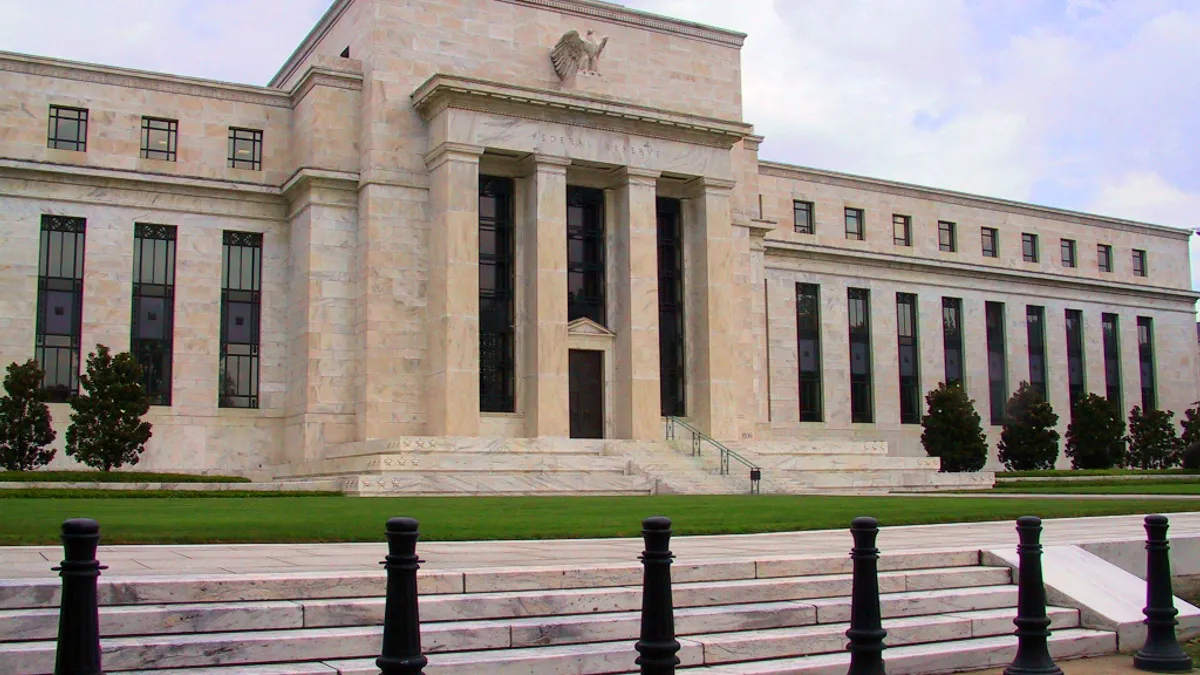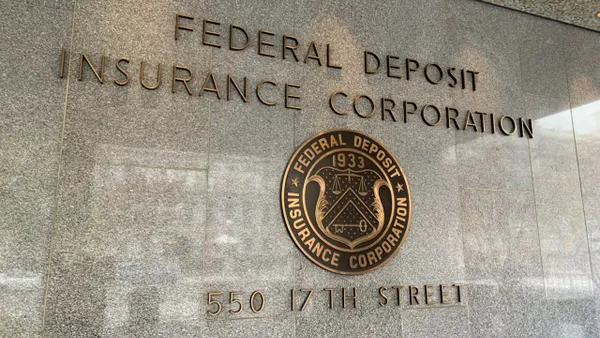Dive Brief:
- The Federal Reserve on Monday released updated guidance for large banks’ resolution plans, or “living wills,” geared toward U.S. and foreign banks that have more than $250 billion in assets but aren’t the largest or most complex financial institutions.
- The guidance, issued in conjunction with the Federal Deposit Insurance Corp., is “largely similar” to what was put forth in August 2023, the Fed said in the release, with some changes to reflect comments received.
- The Fed and FDIC extended the deadline for banks to submit their resolution plans from March 31, 2025, to Oct. 1, 2025. “The purpose of the extension is to provide reasonable time for banks to consider the final guidance as they develop their plan submissions,” the Fed said in the release.
Dive Insight:
A bank’s resolution plan details its strategy for orderly wind-down under bankruptcy if material financial distress or failure were to occur. The rules finalized over the past week apply to banks that submit those plans every three years.
The finalized guidance from the Fed and the FDIC focuses on areas of “potential vulnerability,” including capital, liquidity and operational capabilities, the Fed said.
One notable change: The guidance regulators issued for this group of banks is unique in that it “provides agency expectations for both single point of entry and multiple point of entry resolution strategies, which are different strategies banks have adopted for their rapid and orderly resolution.”
Regulators had received feedback that the proposed guidance favored single point of entry strategies, typically used by global systemically important banks. The change, then, reflects the agencies acknowledging it is up to each bank to choose its resolution strategy.
The final guidance also details how banks can show their living wills would lead to the smallest possible cost to the Deposit Insurance Fund, offering examples for doing so, and recognizes that “the preferred resolution outcome for foreign banks is often a successful home country-led resolution and guides foreign banks on how to address the global resolution plan in their U.S. plan.”
Another change: Guidance around derivatives and trading activities was cut, since banks affected by it have limited derivatives and trading operations.
Although she supported the final guidance, saying it included “several improvements” from the initial proposal, Fed Gov. Michelle Bowman noted in her statement Monday that she continues to have reservations “and would hope that the agencies revisit resolution planning rules and guidance over time as we learn more about the real-world utility of these plans.”
Bowman took issue with the agencies firming up resolution planning guidance “without a clear path forward” on proposed long-term debt requirements, also put forth last August. Regulators have acknowledged that that requirement could have a material impact on a bank’s resolution strategy.
“I am concerned that this bifurcated approach will be confusing to firms, and potentially waste resources as firms start working to prepare a 2025 resolution plan submission that need not address any new long-term debt requirements — even if such requirements are adopted before the plan is submitted,” Bowman said in the statement.
The Fed said staff expects any issues between resolution plan guidance and a final long-term debt rule will be addressed in connection with the latter.
Additionally, revisions are still outstanding in the effort to bring capital requirements in line with Basel III standards, Bowman said.
“Coordinating these various rulemaking and guidance initiatives would have been more efficient and productive, and would likely have resulted in resolution plans that are more informative to regulators,” she said.














